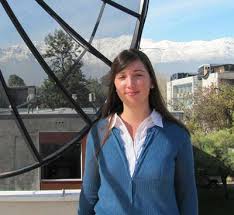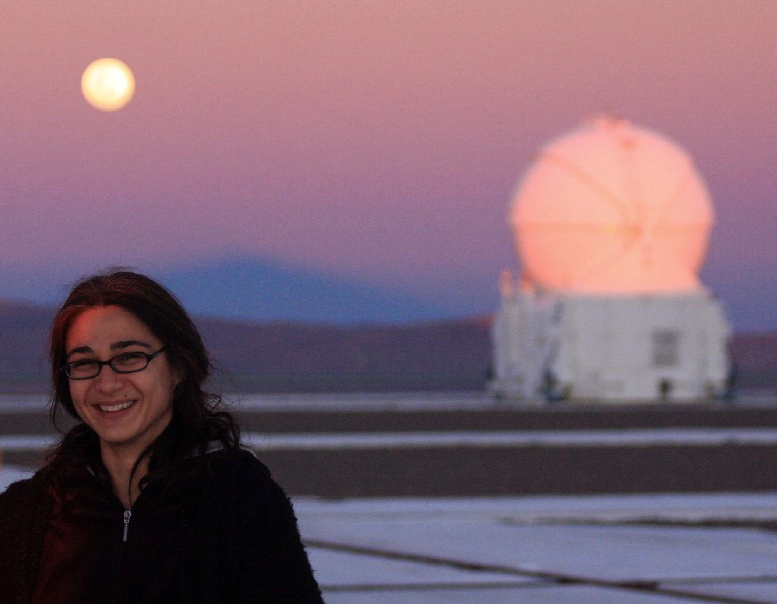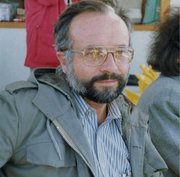
PhD: Ludwig Maximilians Universitaet, Munich, Max-Planck-Institut fuer extraterrestrische Physik
Research Area: Black holes, accretion, Active Galactic Nuclei (AGN)
Publications: ADS
Telephone: (+56 32) 250 8305
email: patricia.arevalo at uv.cl
About my research: My main research interests deal with accretion onto supermassive black holes and the study of the entire central engine of Active Galactic Nuclei (AGN). I use X-ray data, mainly from XMM-Newton, Chandra and NuSTAR space observatories, as well as optical and IR data taken with telescopes in northern Chile to map the structure of the accretion disc, X_ray corona and the molecular dusty obscurer. I also study accretion behind thick layers of gas, to better understand the spectrum of this important phase of black hole growth and better interpret the cosmic X-ray background
Teaching: Graduate course “Active Galactic Nuclei: the X-ray view”
See my research at : Active Galactic Nuclei - Variability (Astrostatistics)

PhD: Pontificia Universidad Católica de Chile (2011)
Research Area: Evolution of Close Compact Binaries, Common Envelope Phase, Cataclysmic Variables, SNe Ia progenitors, Planets Around Evolved Binaries
Publications: ADS
Telephone: (+56 32) 299 5556
email: mzorotovic at dfa.uv.cl
Webpage: https://sites.google.com/site/mzorotovic/
About my research: My work is focused on the simulation of close compact binary stars, and the comparison of these with observational data. The aim is to achieve a better understanding of the common envelope phase, a phase that most of these stars undergo, which is a clue for understanding the evolution of some of the most interesting objects in the universe, such as type Ia supernovae, cataclysmic variables, or close double white dwarfs, to name a few. In addition, the recently suggested possibility of planets around evolved close compact binaries has raised the interest in knowing how they might have formed.

PhD: Institute of Astronomy, KU Leuven, Belgium (2009)
Research Area: Evolution of hot subdwarf stars, compact pulsators, close binary stellar evolution, asteroseismology
Publications: ADS
Telephone: (+56 32) 250 8304
email: maja.vuckovic at uv.cl
About my research: My research focuses on understanding the origin and evolution of extreme horizontal branch stars, by probing the internal structure of pulsating hot subdwarf stars through the interpretation of their frequency spectra. In order to analyse their pulsation spectra I am using the high-resolution time series photometric and spectroscopic data from ground based and space telescopes, like Kepler. By confronting the observed frequency spectrum with the theoretical models I am able to constrain crucial parameters in order to backtrace the evolution of hot subdwarf stars. In addition to asteroseismology I also study close binary stellar evolution, as well as extrasolar planets around evolved stars.
Teaching: "Stellar astronomy", FIS320, 2nd semester 2014
See my research in: Hot Subdwarf Stars - Substellar Objects around Evolved Stars - Data Bases, Surveys and Virtual Observatory - Variabilidad (Astroestadística)

Dr.rer.nat: Universidad de Rühr, Bochum, Alemania (1969)
Research Area: variable stars, cataclysmic binaries, classical novae, dwarf novae, post-common envelope binaries (PCEBs), Mira stars, long-term stellar variability with low amplitude; young low-mass binaries or multiple systems.
Publications: ADS
Telephone: (+56 32) 299 5552
email: nikolaus.vogt at uv.cl
About my research: In collaboration with Claus Tappert and an international workgroup I am carrying out a project for recovering classical Novae, more than 30 years after their eruption, by using spectroscopy and photometry on the remnants, determining orbital periods and other essential parameters to better understand the relation between Novae and other subclasses of cataclysmic variables. I am also leading another international project that analyzes observations of the cataclysmic binary TT Ari, obtained with the Canadian Space Telescope MOST in 2007 and 2012. Together with our students I am obtaining and analyzing our own observations of post-common envelope binaries (PCEBs) and other types of variable stars. In addition, we are utilizing the ASAS data-base in order to investigate properties of pulsating Mira stars, as well as the behavior of long-term variables with low amplitude. - In collaboration with astronomers of the Universities of Jena and Hamburg, Germany, I am carrying out research on young stars of low mass. This project is based on observations made with the NACO instrument of Paranal Observatory (ESO) which allows infrared photometry, high-angular resolution, and precise astrometry of stars in star forming regions and their companions and their stellar and substellar companions (brown dwarfs and planets).
Teaching: Introductory course in astronomy, optional courses (astrobiology, variable stars); undergraduate seminars and dirección of thesis in Master program of Astrophysics.
See my research in: Cataclysmic Variables and Novas - Substellar Objects - Planet and Star Formation - Variability





